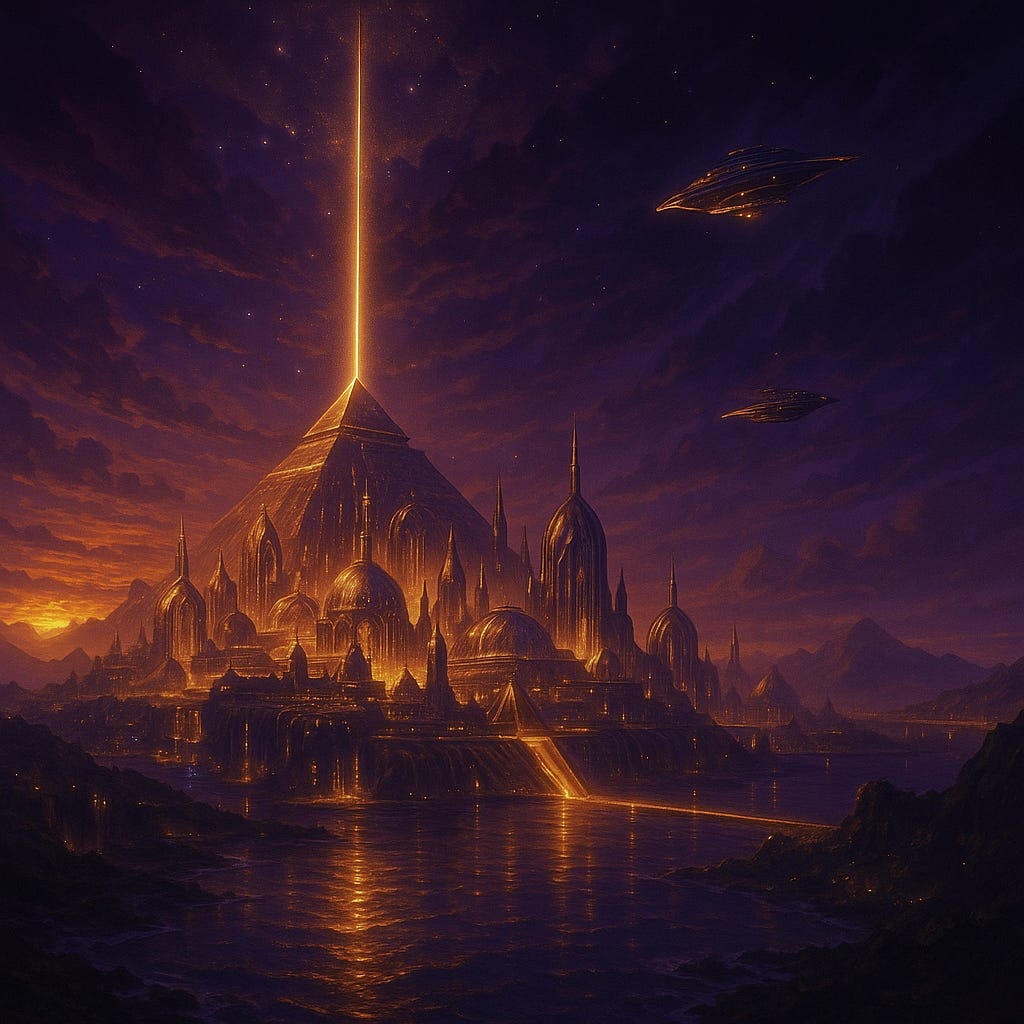Atlantis Lecture Series — Part Four
Technology, Division, and the First Great Sinking
This is a modern American English translation of reading 364-4.
Modern Translation
Gertrude Cayce: Give a lecture titled “The Lost Continent of Atlantis” and continue developing the material for that talk.
Edgar Cayce: I confirm that the subject before us is indeed Atlantis.
The early Atlanteans were peaceful. As their physical bodies took shape, they learned to use the natural elements around them for food, clothing, and shelter. Their main progress lay in preparing for what we would now call the aerial and electrical age—finding ways to move matter, including themselves, by mastering the forces already present in nature.
Amilius saw that his people could not only shape raw materials but also move their own bodies across vast distances by unlocking gases, electrical properties, and atomic power. Yet when the “Sons of the Creative Force” mingled with less-disciplined groups, selfishness crept in—greed, hatred, bloodshed, and the urge to dominate. The pure lineages tried to pull society back with seasonal rituals, and in Amilius’s later years the first altars were built for offerings from field and forest to satisfy physical desires.
During the rise of a later ruler, Esai, huge predatory beasts began overrunning the continent. Nations across the globe banded together to fight them. This age produced the first man-made explosives that could be carried and aimed. The altar fires turned from animal to human sacrifice. People emigrated: some to the Pyrenees (ancestors of later Egyptians of mixed lineage), some to the region of Og in South America (early Inca/Aymara builders of mountain walls), and some to North America (mound builders). Disregard for spiritual laws and misuse of natural gases and electricity triggered violent eruptions; part of Atlantis—near today’s Sargasso Sea—sank. Migrants carried Atlantean knowledge of calendars, astronomy, and sacred signs wherever they went.
As more cities rose, it became harder to draw on natural forces for basic needs. Hunger appeared. About 10,700 BCE, leaders again pushed nature’s limits, trying to force the mountains, valleys, and even the sea itself to yield resources. Rapid disintegration followed—land crumbled and many people perished, except those who had fled to distant regions.
What does this mean for us today? In every tradition that has guarded its sacred fire—Hermetic, Ararat, Aztec, Aymara—some piece of these blessings remains, so long as it stays pure. If you want truth, live every bit of truth you already know; as you use it, more light will come and you’ll remember where you came from and where you’re going.
I am ready for questions.
Q: Describe Earth’s surface during Atlantis’s highest civilization, using present-day names.
A: “Highest” can mean spiritual or commercial; Atlantis covered roughly 200,000 years by our time scale, and Earth’s face changed many times. In an early peak, what is now southern South America and today’s Arctic lay in temperate zones, while modern Siberia and Hudson Bay were tropical—on a latitude like today’s South-Central Pacific. After later shifts, Earth assumed nearly its current tilt. Lemuria in the South Pacific began sinking even before Atlantis. The final major Atlantean destruction occurred about 10,700 years before the birth of the Prince of Peace (Jesus).This concludes the reading for now.



